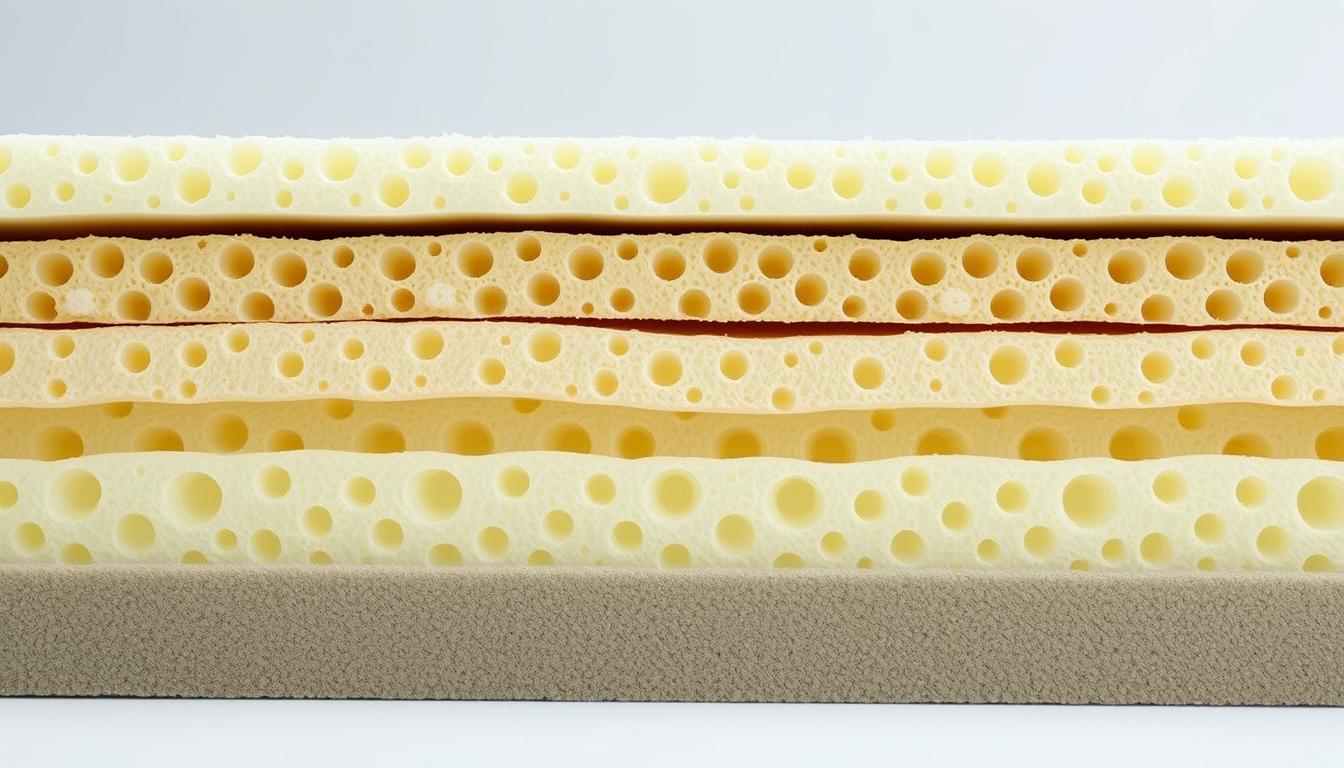How Thick Is Closed Cell Foam? - Insulation Guide
The thickness of closed-cell foam is key to your home's insulation. It greatly affects how well your home keeps warm in winter and cool in summer. But what's the best thickness for this insulation, and how does it stack up against others? This guide will dive into what makes the perfect thickness, the perks of closed-cell foam, and the best ways to install it. We aim to help you choose the best option for your home.
Key Takeaways
- Understanding your area's R-value and insulation needs is vital to picking the right closed-cell foam thickness.
- Closed-cell foam is top-notch for insulation, sealing air, keeping moisture out, and beating other materials.
- Building codes and rules set the minimum thickness needed for closed-cell foam insulation.
- Getting the foam installed right, like sealing gaps and edges, is critical to its success.
- Thinking about the balance between thickness, cost, and installation ease can guide you to the best choice for your project.
Understanding Closed Cell Foam Insulation
Closed-cell foam insulation is a top pick for keeping homes and buildings warm. It's a rigid foam board that keeps heat in and moisture out, making it better than open-cell foam for saving energy.
What Is Closed Cell Foam?
Closed cell foam is a rigid insulation made of tiny, closed cells. These cells are filled with gas, making the foam insulate well. Its closed structure blocks air and moisture, making it great for keeping buildings warm and dry.
Benefits of Closed Cell Foam Insulation
Closed-cell foam insulation has many benefits. Here are a few:
- High R-value: It has a high R-value per inch, keeping buildings warm.
- Moisture resistance: Its closed-cell structure stops mold and mildew.
- Structural strength: It's a rigid, high-density material that supports buildings.
- Air sealing: It seals air leaks, improving energy efficiency and air quality.
These benefits make closed-cell foam insulation excellent for many uses, from homes to commercial buildings.
Read More: 7 Main Benefits of Closed Cell Spray Foam Insulation
Factors Influencing Closed Cell Foam Thickness
Several factors affect the thickness needed for closed-cell foam insulation. Knowing these can help you pick the right thickness for your project, ensuring its energy efficiency.
Insulation Requirements and R-Values
The thickness of closed-cell foam insulation depends on its R-value, which shows how well the foam keeps heat in or out. Building codes and energy standards set R-value minimums based on climate and building type.
You should adjust the foam's thickness to meet these standards. A thicker layer usually means a higher R-value, but the exact relationship between thickness and R-value varies by foam product.
Read More: What is the R-value of closed cell spray foam?
Building Codes and Regulations
Local building codes and regulations are vital in setting foam thickness. These codes aim to ensure buildings are energy efficient and safe. Climate, building type, and use influence these standards.
Before choosing foam thickness, check with local building officials. Reviewing the relevant codes is crucial to ensuring your project meets energy and safety standards.
How Thick Is Closed Cell Foam?
The thickness of closed-cell foam insulation greatly affects its performance. It's known for its excellent thermal and moisture resistance, which makes it a top choice for many construction and renovation projects.
The thickness of closed-cell foam insulation varies from 1 inch to 4 inches. This depends on the application and the insulation level needed. The thickness you choose is based on the R-value, density, and building codes.
For many projects, 2 inches of closed-cell foam is enough. It provides an R-value of R-10 to R-12, meeting most energy standards. But in colder areas or for higher insulation needs, 3 or 4 inches might be needed.
Closed-cell foam is dense and rigid, making it heavier than other insulations. This weight can offer structural support, but it's important to consider it when installing it.
Talk to a professional or check the manufacturer's data to find the right thickness for your project. This ensures you get the best thickness for your needs and optimizes the insulation's performance and durability over time.
Installation and Application Considerations
Getting closed-cell foam insulation right is critical to its success. Before starting, ensure the area is ready, and all tools are in place. This provides a smooth installation that brings out the best in this insulation.
Read More: What are the applications of closed cell foam?
Preparing for Closed Cell Foam Installation
Start by checking the job site for any issues. Clean the area, seal cracks, and make sure it's dry. Also, have your safety gear ready to keep everyone safe.
Proper Installation Techniques
With the site ready, it's time to spray the foam. Follow the maker's rules to get it right. This means keeping the right conditions, applying evenly, and waiting for it to cure.
Read More: Cost of Spray Foam Insulation
FAQ
What is closed-cell foam?
Closed-cell foam is a rigid insulation material with a dense, non-porous structure. This makes it better at insulating and resisting moisture and stronger than open-cell foam.
What are the benefits of closed-cell foam insulation?
Closed cell foam has many benefits. It has a high R-value, so it's good at keeping heat in or out. It also resists moisture well and is very durable. This can help make homes and buildings more energy efficient.
How thick does closed-cell foam need to be?
The thickness needed for closed-cell foam depends on several factors, including the R-value needed, local building codes, and the application. It usually ranges from 1 inch to 6 inches. For most homes and buildings, 2 to 3 inches is recommended.
Is 2 inches of closed-cell foam enough?
Often, 2 inches of closed-cell foam is enough. It can meet the R-value needed for many applications. However, the right thickness can depend on the climate, building design, and local energy standards. Always check with a professional or building codes for your project.
How heavy is closed-cell foam?
Closed-cell foam is denser and heavier than open-cell foam. It weighs 1.5 to 3 pounds per cubic foot. The exact weight can vary by type and manufacturer, but it's generally heavier than other insulation materials.
What is the R-value of closed-cell foam?
Closed-cell foam has a high R-value per inch, ranging from R-5 to R-7 per inch. Some types can even reach up to R-8 per inch. The R-value can change based on the foam's density and who made it.
How do I properly install closed-cell foam?
Correct installation of closed-cell foam is critical to its success. You must prepare the surface, cut the foam to fit, and seal all gaps and seams. Always follow the manufacturer's instructions. For big projects, it's a good idea to get help from a professional insulation contractor.



